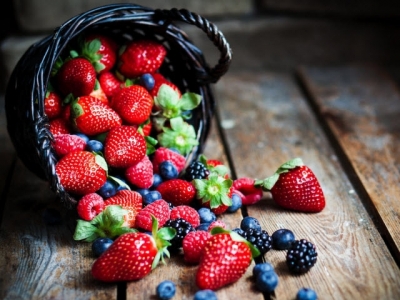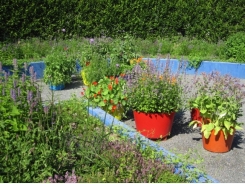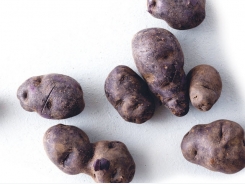How to Find the Seasons Best Berries

With the hot, sticky summer months comes one of life’s greatest joys: Fresh berries, easily found in farmer’s markets across the country. In your haste to enjoy the season, however, you may not have noticed that the quality of your fruit can vary wildly from batch to batch. Sadly, the secret to finding consistently delicious berries is not as simple as buying local or organic.
In 1983, Jim Cochran and Mark Matze founded Swanton Berry Farm on four acres of rented land in central California. Although Matze left after a few years, Cochran soldiered on with his crop of organic strawberries. By 1987, Swanton Berry was certified as the first organic strawberry farm in California, and by 2011, Cochran had received the NRDC’s Growing Green Award. Today, Swanton Berry Farm has a reputation among Bay Area foodies for selling some of the region’s best produce, including blackberries, cauliflower, and of course, strawberries.
According to Cochran, strawberry and cane berry flavor is mostly determined by variety and by ripeness. Careful pickers can easily sell the ripest berries, but Cochran says that most supermarkets and even other organic farmers generally sell lower flavor varieties to maximize their profits. Higher flavor varieties tend to produce less fruit, despite being the same size plant. So, each berry is more flavorful, but the decreased crop size hurts profits.
“Farmers make more money on lower flavor varieties because they don’t get much if any price premium for flavor,” says Cochran, who adds that most supermarket and farmer’s market berries are lower flavor. “Local organic farmers have done the math, too. We grow higher flavor berries and have very loyal customers, but make less money than we could if we took the other route.”
Though most savvy shoppers would be skeptical of generic supermarket produce, blind trust in local organic produce can also be misplaced. In order to secure the best berries, keep an eye out for farms like Swanton Berry that have an open, vested interest in cultivating for quality, not quantity.
As for specific berries, Cochran prefers the strawberry “I find most other berries disappointing.” but says that they are much more difficult and expensive to grow than other kinds, such as blackberries. According to Cochran, blackberries grow well in different climates, have few pests, and, once established, produce fruit for multiple seasons. Strawberries, however, are subject to many pests and diseases, and are highly sensitive to climate conditions.
“They require lots of attention labor,” he says. “In any given season, you are likely to be hit by one or more problems, which can reduce yield to below optimal. And, since your labor costs are very high, you can’t afford too many hits.”
This might explain why the average strawberry, grown by a less scrupulous farmer, may be more hit-or-miss than other berries, like the more vigorous raspberry. Regardless, the well-grown fruit will always trump the “factory farm” mentality something to keep in mind for your next berry spree.
Buyer’s Guide
Strawberries: Generally best from mid-June to early July, look for berries that are dry, firm, deep red in color, with intact stems they do not ripen further after picking.
Raspberries: Find fully colored raspberries that hold their shape, since soft berries spoil sooner, ripened in late June and early July.
Blackberries: Available from May to September, but peak in June and July; look for shininess, as the blackberry’s dull color is a good sign of its age.
Blueberries: Purchase smooth-skinned, dark blue or purple berries, making sure to avoid juice-stained containers, from mid-June to mid-August.
Related news
Tools

Phối trộn thức ăn chăn nuôi

Pha dung dịch thủy canh

Định mức cho tôm ăn

Phối trộn phân bón NPK

Xác định tỷ lệ tôm sống

Chuyển đổi đơn vị phân bón

Xác định công suất sục khí

Chuyển đổi đơn vị tôm

Tính diện tích nhà kính

Tính thể tích ao



 How to Build a Hot Bed
How to Build a Hot Bed  Cropped: Bananas
Cropped: Bananas